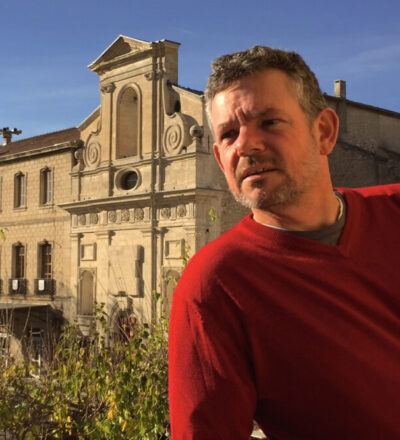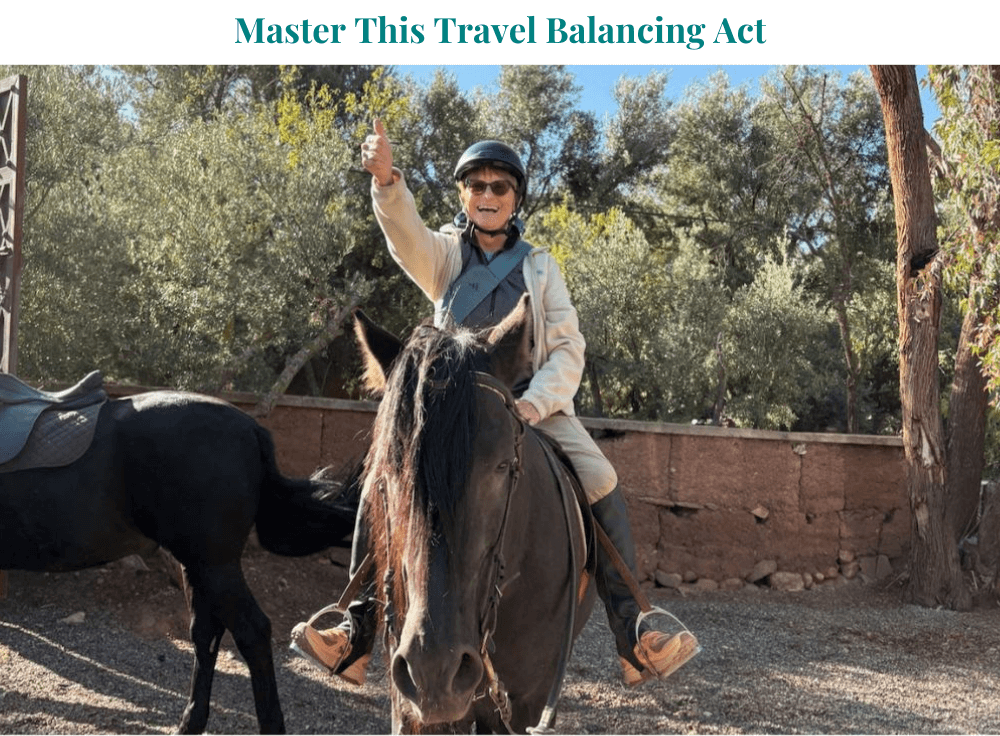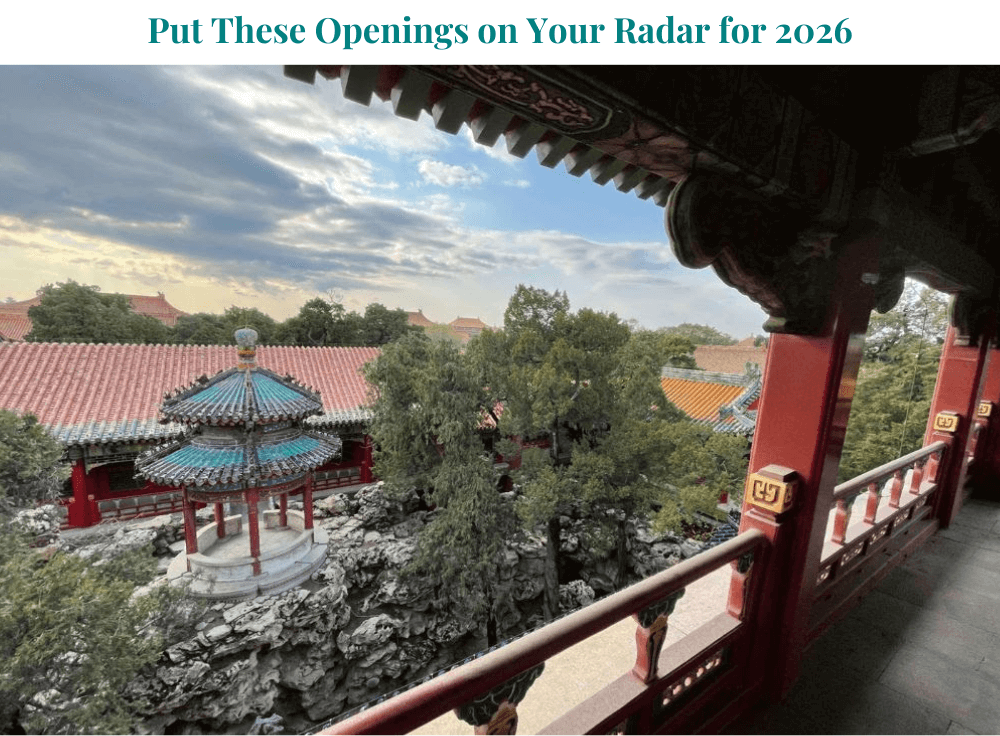Provence and the French Riviera: Ultimate Insider’s Guide
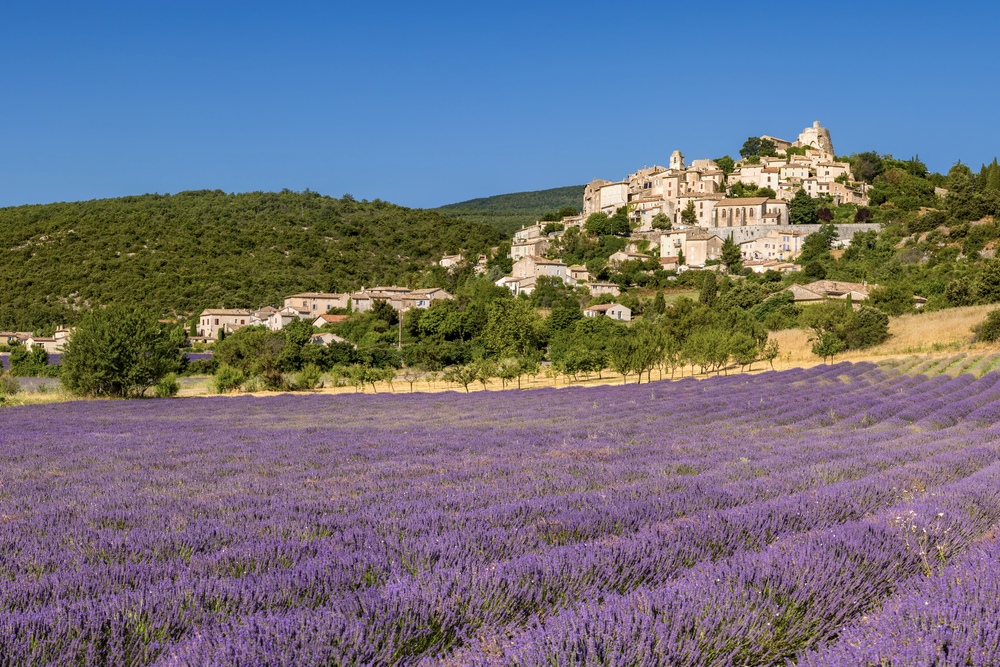 Simiane-la-Rotonde in Alpes-de-Haute-Provence. Photo: Shutterstock
Simiane-la-Rotonde in Alpes-de-Haute-Provence. Photo: Shutterstock
The insider advice on this page is from one of Wendy’s Trusted Travel Experts for southern France: Philip Haslett of French Promise.
Philip crafts elegant, bespoke itineraries through the hidden pockets of southern France that, sadly, most travelers miss. The reason he knows so many charming villages, country lanes, waterways, and cowpaths is the many years he spent captaining both hot-air balloons and luxury hotel barges: He frequently ended up in the middle of nowhere in rural France, making unusual discoveries and meeting interesting local characters. An Englishman who has lived in France since 1987, he still personally guides the occasional Hollywood celeb and Forbes Lister, but usually he is too busy running his Provence-based travel firm. He can unlock the Palace of the Popes at night, unlock most doors in Bordeaux, helicopter you in to hike with shepherds in the Pyrenees, or ensconce you in a chic beachside villa whose guest list looks like the Oscars seating chart. From the Atlantic to the Mediterranean, he excels at trips that focus on food and wine or adventure (often a bit of both): enjoying oysters fresh from the sea, wine tasting with world-class sommeliers, canyoning in the Verdon Gorge, or surfing in Biarritz. Bear in mind that some of the sights he’ll recommend are so hidden that you may be better off using one of his English-speaking driver-guides than renting a car and attempting to navigate on your own.
Things to Do and See
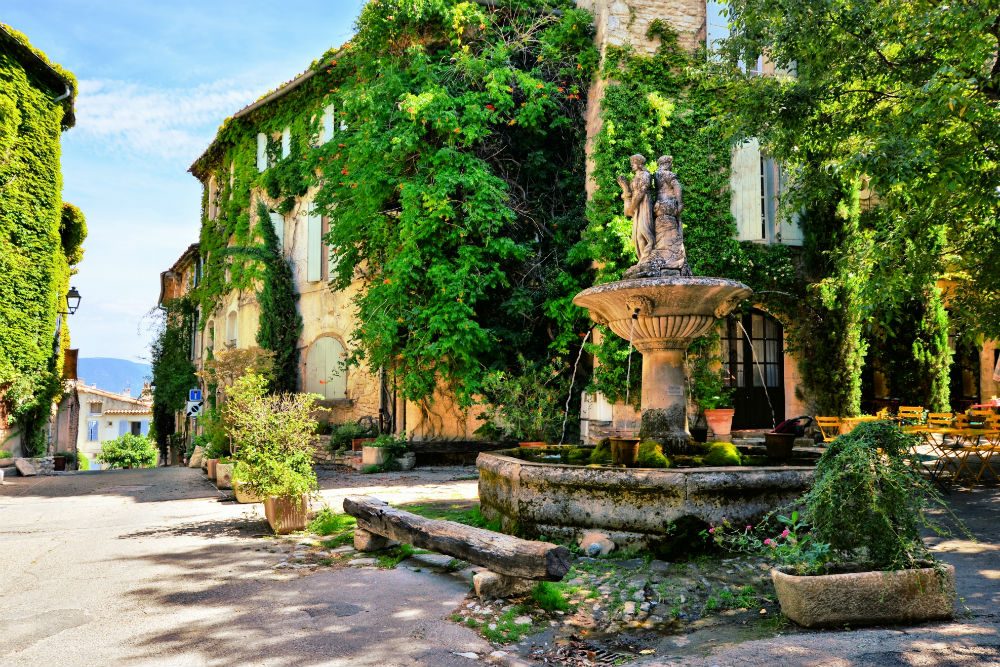
Don’t miss the charming village of Saignon. Photo: Shutterstock
Hidden gems
Two little towns on either extreme of the Luberon are often overlooked: Saignon, a small but beautiful village that has retained all of its charm while keeping a low profile, and Oppède le Vieux, which has a wonderful bistro called Le Petit Café. Come here for a sensibly priced lunch and you won’t find many other tourists, even in summer.
On the Riviera, the FAMM (Femmes Artistes du Musée de Mougins) is a private museum dedicated to female artists. The museum’s Levett Collection features paintings, sculptures, photographs, and drawings exclusively created by female artists, ranging from Impressionism to contemporary art of the 21st century.
Haut-de-Cagnes, the historic part of Cagnes-sur-Mer, is often missed on Côte d’Azur itineraries—and yet it was here that artists Renoir, Soutine, Modigliani, and Klein came to find their inspiration. It is a wonderful village for an aimless stroll, where a surprise is always waiting around the corner of the narrow alleyways and cobbled streets. The village has a collective of local jewelers whose galleries you can peruse; a visit to the Château Musée Grimaldi, overlooking the village and offering sublime views of the surrounding region, is a must.
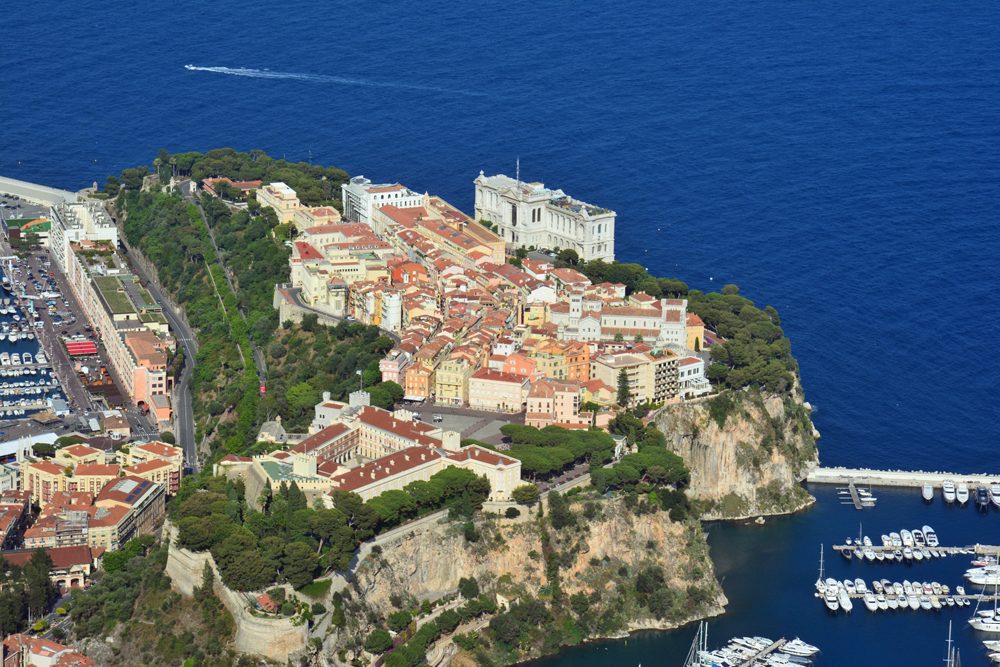
Drive up to the Tête de Chien rock, and you’ll get this view of Monaco. Photo: Philip Haslett
Cheap thrill
Not much is cheap on the Riviera, but they can’t charge for the view from the Tête de Chien rock. Drive up to the top and then walk down the dirt track, and suddenly you’re overlooking all of Monaco and Saint-Jean-Cap-Ferrat. Another spectacular viewpoint is from the Fort de la Revère, high above the village of Eze.
It doesn’t get more Provençal than playing petanque with the locals (including Philip, if he’s around). Ambience guaranteed!
Not-so-cheap thrill
Having your yacht pick you up at the foot of your hotel and take you to lunch in Saint-Tropez is a true Riviera moment. If yachts aren’t your thing, then a helicopter from Monaco or Cannes to Alain Ducasse’s La Bastide de Moustiers—flying over the Verdon Gorge followed by a photo session in the lavender fields—is an unforgettable experience.
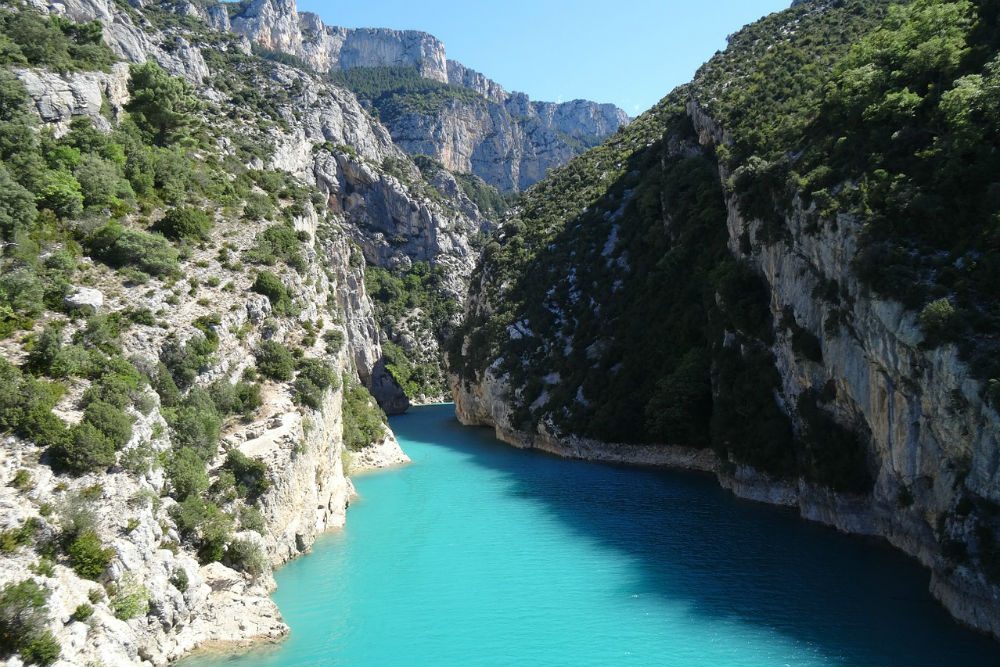
Provence’s Verdon Gorge is known for the bright hue of the Verdon River. Photo: Pixabay/Miss EJB
Most underrated place
Marseille gets a bad rap, but it’s one of the most beautiful cities in the south of France—and it has an incredible selection of hotels. If nothing else, pass through to see the Basilica of Notre-Dame de la Garde, which offers a 360-degree view over the Mediterranean; the Chateau d’If (a setting for The Count of Monte Cristo); and the port and various forts and defenses that were built to guard it. If you have time, explore the Panier district, with its little shops and squares that are evocative of old Marseille, and the MuCEM—the Museum of European and Mediterranean Civilizations, built in 2013 when Marseille was the European Cultural Capital—or, for that matter, any of the other 26 museums found here. For art of another variety, visit the Cours Julien, where you can view the work of street artists such as Monsieur Chat, C215, and RNST.
Don’t miss
If you’re visiting in summer, it’s well worth catching one of the world-famous musical acts that perform in some very magical sites: Imagine listening to Beethoven’s 9th in the Roman Theatre of Orange, Don Giovani in the Archbishop’s Palace in Aix-en-Provence, Nile Rodgers in Juan-les-Pins overlooking the Bay of Cannes, or Pharrell Williams in the Roman Arena of Nîmes. The south of France is home to some of the best music festivals in France (and beyond). Rock, pop, jazz, opera, and classical music lovers are sure to find a festival that delights.
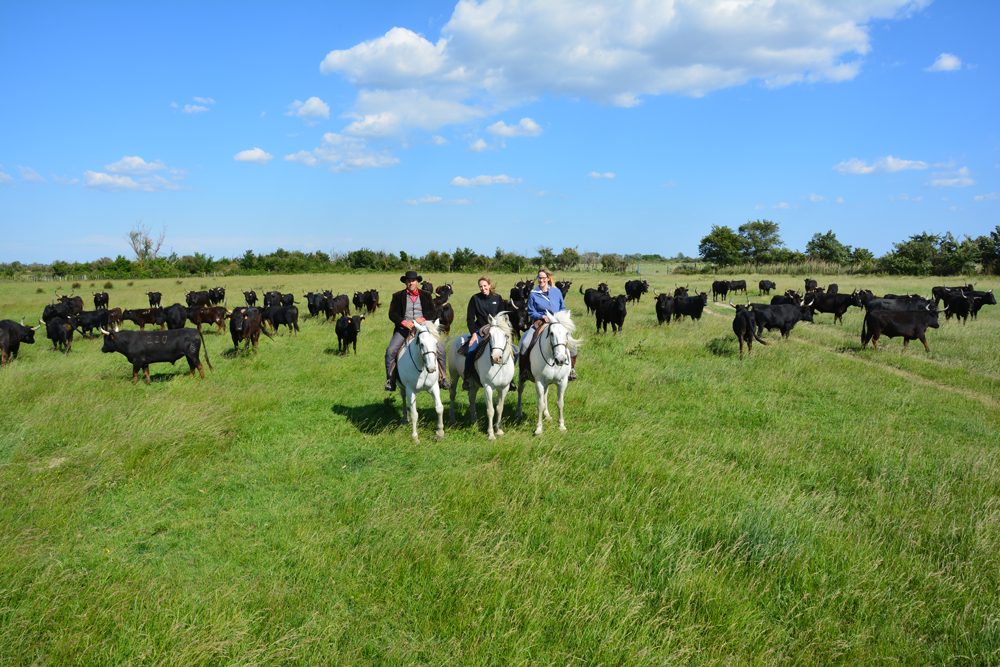
Take a private Camargue tour on horseback. Photo: Philip Haslett
Outdoor pursuits
The hiking and biking is lovely, of course, but if you want something a little more unusual, try canyoning in the Verdon Gorge or the Gorges du Loup, sea kayaking to unspoiled beaches around Saint-Tropez, horseback riding in the Camargue, or even hot-air ballooning (as a former balloon pilot himself, Philip can set you up with the best of the best).
How to spend a lazy Sunday
Head to the market in L’Isle-sur-la-Sorgue, which is a fabulous spot for both antiques and food. Collect the makings of a picnic and then enjoy a canoe ride down the Sorgue River, nibbling goat cheese and saucisson as you go.
Where to Stay and Eat
Best bang-for-your-buck hotel
Hotels on the French Riviera are notoriously expensive, but a few small guest houses do offer good value. One of Philip’s favorites is Maison du Frêne in Vence: huge rooms, unique decoration, and a medieval city at your doorstep.
Hotel worth the splurge
Philip is particularly fond of Hôtel Lou Calen. Nestled in the heart of Provence, it offers a peaceful escape in the picturesque region of La Provence Verte. Surrounded by lush vineyards, rolling hills, and charming medieval villages, this boutique hotel provides the perfect setting for a getaway. Make sure to explore the Haut Var, a region known for its natural beauty and Hollywood celebs in pursuit of privacy and seclusion. And set aside time to indulge in a wine tasting at the nearby Château de Berne, set in a beautiful patch of Provençal countryside.
Restaurants the locals love
Chez Tania, in La Ciotat, is a hidden gem set above the cove of Figuerolles. Go for the grilled fish and the chill vibe.
For traditional bouillabaisse, fresh fish on display, and uniformed waitstaff, choose Chez Michel in Marseille. Alas, you won’t get a sea view, but with food this good it doesn’t matter. If you want to blend in with the local crowd and live the Marseillaise life, this is the spot.
In the heart of Aix-en-Provence in the Quartier Mazarin, La Brocherie offers succulent grilled meats, authentic Provençal flavors, and fine regional wines in a cozy atmosphere. Philip’s team frequents this spot for team-building lunches—and on those days they go light on breakfast.
For a sea view and Mediterranean flavors, it’s hard to beat the Cap d’Antibes Beach Hotel’s restaurant, BABA.
Nestled in the heart of Saint-Rémy-de-Provence, charming Chapeau de Paille puts a modern twist on traditional Provençal cooking. Whether in the warm and welcoming dining room or on the outdoor terrace (where you can check out the passersby), you will enjoy a meal that captures the essence of Provence. It’s the kind of place where, if you stay long enough, you’ll end up sharing some home-made limoncello digestif with the owners.
Beach bar buzz
On Pampelonne Beach, the mythical Club 55 is one of the most famous and fabulous beach clubs. Created in 1955 during the filming of And God Created Woman as a canteen for the crew, Club 55 has thrived due to its fun, relaxed vibe and A-list Hollywood clientele. If dancing on tables is your thing, then Nikki Beach or Verde might be the spot for you. For excellent food and a great setting, Philip prefers Jardin Tropezina, La Serena, and La Reserve Plage.
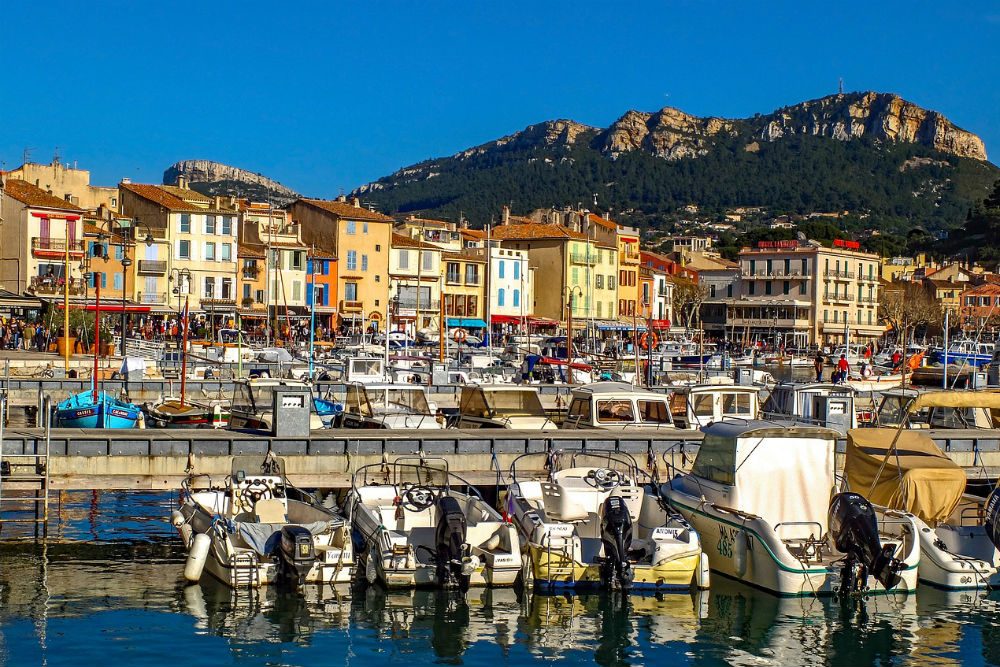
Try a bowl of bouillabaisse in the fishing village of Cassis. Photo: Pixabay/djedj
Dishes to try
Bouillabaisse. This traditional Mediterranean fish stew is probably the most emblematic dish of the region. In the fishing village of Cassis, try it at Chez Gilbert, and in Marseille at Chez Fonfon or Rhul. If you want the three-Michelin-star version, order Le Petit Nice’s Bouille Abaisse, an entire menu based on the dish. Want another unusual riff on this classic? Try the Milkshake de Bouille-Abiasse at Marseille’s Intercontinental, overlooking the Old Port. And if you prefer to make your own, Philip can organize just that in Marseille: A chef will take you to buy fish from the fishermen in the Old Port, then bring you to his home to prepare it.
Be sure to taste la socca while in Nice. This chickpea-flour pancake, crispy on the outside and soft on the inside, is baked in a wood-fired oven and served hot. A Niçoise speciality, socca is most often enjoyed as street food with just a dash of black pepper.
Meals worth the splurge
At Mirazur, a chic place with three Michelin stars in the hills above Menton, the dishes are simple but beautifully prepared, and the seafood is incredibly fresh. Think about booking a year in advance! You may also want to check out Ceto, chef Mauro Colagreco’s other Michelin-starred restaurant on the rooftop of the Maybourne Riviera hotel, for stunning views and locally sourced seasonal creations.
AM par Alexandre Mazzia, in Marseille, is another three-Michelin-starred restaurant and an extraordinary gourmet journey. Don’t expect a menu here; you just choose the length of your meal and the dishes arrive, all based on the best produce from local markets, fishermen, and the like.
Baumanière, in Les Baux-de-Provence, is yet another three-Michelin-starred option in the neighborhood. Helmed by chef Glenn Viel—who has become a household name in France as a result of his television career—Baumaniere is notable for its elegant and tranquil ambiance, avant-grade Mediterranean fare, and encyclopedic wine list.
While the Colombe d’Or in Saint-Paul-de-Vence has a reputation as a fancy spot, the prices are not quite as high as one would expect and the vibe is laid back. The traditional Provençal dishes won’t disappoint and the stunning, art-filled setting may just blow your mind.
Best Times to Go
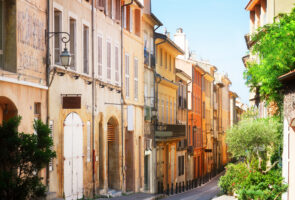
May, June, and September: There are fewer visitors and the temperatures are not so high. May and June are particularly beautiful months for the poppies and—at the end of June—the lavender.
Worst Times to Go
April and November see the most precipitation, though it never rains for very long.
July and August are hot and quite busy (though if that’s what your schedule dictates, Philip can help you get away from the crowds).
Many hotels and restaurants are closed in the winter—but Christmas in Provence can be a truly magical experience, especially with holiday markets all aglow.
Bragging Rights
Philip has close relationships with artisans across the region with whom he can organize exclusive visits and, in some cases, workshops. Fancy visiting with an internationally renowned ceramicist in his private studio? Or meeting with a famous glass sculptor and creating your own piece during an exclusive workshop?
Philip’s close connections with local wine producers allow him to take guests to off-the-beaten-path vineyards and lesser-known wine regions in Provence, such as Vacqueyras. On the French Riviera, Philip can introduce you to the varied nuances of rosé with exclusive tastings in extraordinary settings, whether on a private island or aboard a traditional wooden boat in the bay of Saint-Tropez.
Can't-Miss Photo Op
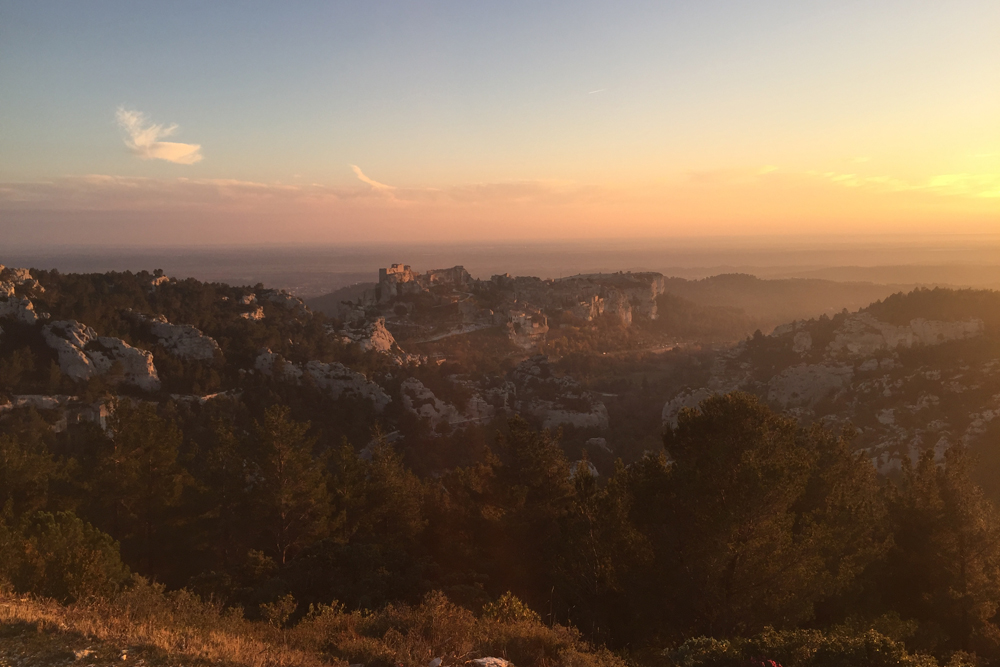
Sunset above Les Baux-de-Provence is gorgeous, and usually there are just a few locals enjoying it. The same goes for the Tête de Chien on the Riviera (see “Cheap thrill”).
The Souvenirs
A pair of Rondini sandals, made in the family’s workshop in Saint-Tropez.

